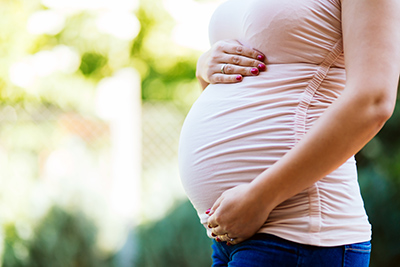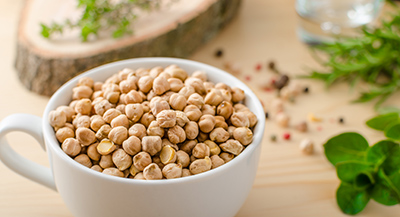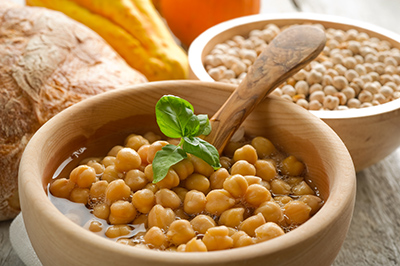Contents
Indians have known about chickpea health benefits for centuries because a large part of the population follows a primarily vegetarian diet, and chickpeas are a leading source of protein. In the same way, chickpeas have been a fundamental ingredient in the traditional diets of the individuals residing along the coasts of the Mediterranean.
Because of this, perhaps, chickpeas have been considered a “food of the poor” by “modern, developed” city dwellers. However, these individuals, menaced by the diseases of civilization (arteriosclerosis, heart attack, stress, etc.), need a good plate of chickpeas.

Chickpea Nutritional Facts
Chickpea is nutritious and balanced, containing tremendous energy (364 kcal/100 grams). It is a good source of essential nutrients except for vitamin B12 (which is accurate in all plant-based foods). C, E, and provitamin A are available, but only in modest amounts. The leftover nutrients are well represented in the chickpea:
- Proteins – Chickpeas provide a significant amount (19.3 percent), equal to or greater than eggs and meat but less than other protein-rich legumes such as beans, lentils, and soy. These are complete proteins that contain all amino acids (essential and nonessential) except the sulfurated amino acid methionine, which is not found in an optional proportion.
Some nutritional specialists have exaggerated this protein deficiency, which is true of all legumes. They have not considered that any grain, such as wheat or rice, eaten with chickpeas more than compensates for their relative lack of methionine. The legume-grain combination generates a protein of exceptional biological quality. - Carbohydrates – Chickpeas are rich in carbohydrates (43.3 percent), predominant starch. Starch is converted slowly to glucose during digestion but must be well chewed and salivated.
- Fat—Chickpeas are 6.04 percent fat, substantially more than beans or lentils but less than soy. Most of these fats are polyunsaturated.
- Vitamins – B group vitamins are the most abundant in chickpeas. One hundred grams of chickpeas provide 0.477 mg of vitamin B1, representing a third of the daily need for this vitamin. Chickpeas are also a great source of vitamins B2 and B6. Folates are also implicated in proper nervous system function and reducing heart attack risk. They are plentiful: One hundred grams of chickpeas provide almost triple this nutrient’s RDA (Recommended Dietary Allowance).
- Minerals – The most noteworthy are iron (6.24 mg/100 grams, almost three times that of meat), phosphorus (875 mg/100 grams), magnesium (115 mg/100 grams), calcium (105 mg/100 mg), and zinc (3.43 mg/100 grams).
Chickpea Health Benefits
The unique health benefits of chickpeas make this modest legume a dietary food perfect for modern-day women and men: They help decrease cholesterol and avoid constipation while boosting the nervous system.

Chickpeas are an almost perfect food whose nutritional quantities are pretty well balanced. Therefore, they can be utilized as the primary meal dish, as in a conventional Mediterranean diet. Consuming chickpeas consistently is recommended in the following situations:
Increased cholesterol – Chickpeas contain a moderate amount of high-quality (mono and polyunsaturated) fats that aid in lowering blood cholesterol levels. Chickpeas’ fiber also impedes cholesterol absorption from foods in the intestine (chickpeas have no cholesterol). Subsequently, eating more chickpeas and fewer meat products reduces cholesterol levels and enhances arterial health. Finally, eating chickpeas inhibits arteriosclerosis in all indications, including heart attack.

Constipation – The fiber in chickpeas naturally stimulates intestinal peristaltic action, thus moving the feces through the lower digestive tract.
Functional nervous system ailments result from B vitamin deficiency, such as lack of concentration, nervousness, and irritability. Chickpea health benefits are highly advised for those suffering from depression or stress.
Pregnancy – This legume is ideal for pregnant women because it is rich in folates, which ward off nervous system defects in the fetus. Chickpea health benefits include a very high amount of iron, proteins, and other minerals.
Zinc Deficiency
Some nutrition specialists emphasize that plant-based food can be lacking in zinc. However, 100 grams of chickpeas contains more zinc (3.43 mg) than the same quantity of meat (2.97 mg). Chickpeas, like lentils and soy, are an excellent source of zinc.

– They reduce cholesterol levels,
– They prevent constipation,
They strengthen the nervous system thanks to their richness in B group vitamins.
Chickpea Scientific Facts
- Scientific name: Cicer arietinum L.
- Other names: Garbanzo bean, Dwarf pea, Chickpea, Calvance pea, Bengal gram, Yellow gram, Gram pea.
- French: Pois chiche.
- Spanish: Garbanzo, chícharo.
- German: Kichererbse.
- Description: The seed of the chickpea plant of the botanical family Leguminosae. Its fruit is an avoid legume containing two seeds, chickpeas.
- Environment: Chickpeas are resistant to drought and extremes of heat and cold. India controls seventy percent of the world’s chickpea production. Other producing countries are Mexico, Turkey, and the Mediterranean countries.

How to Use and Prepare Chickpeas
- Cooked – This is the most conventional manner of making and eating chickpeas in the West. They can be included in soups and stews. They come together very well with rice dishes.
- Oven-roasted or fried – When prepared this way, they are somewhat indigestible since some of the starch becomes resistant to gastric juices.
- Chickpea flour – This is widely used in India to make various culinary items such as falafel.
DISCLAIMER: All content on this website is presented solely for educational and informational objectives. Do not rely on the information provided as a replacement for advice, diagnosis, or treatment from a qualified medical expert. If you are pregnant, nursing, or have any preexisting medical concerns, talk to your doctor before using any herbal or natural medicines.
REFERENCES
- George D. Pamplona-Roger, M.D. “Encyclopedia of Foods and Their Healing Power.” George D. Pamplona-Roger, M.D. Encyclopedia of Foods and Their Healing Power. Trans. Annette Melgosa. Vol. 2. Chai Wan: Editorial Safeliz, 2005. 91, 92. Print.
- WebMD: https://www.webmd.com/food-recipes/health-benefits-chickpeas
- Healthline: https://www.healthline.com/nutrition/chickpeas-nutrition-benefits
- Frontiers in Nutrition: https://www.frontiersin.org/articles/10.3389/fnut.2023.1218468
